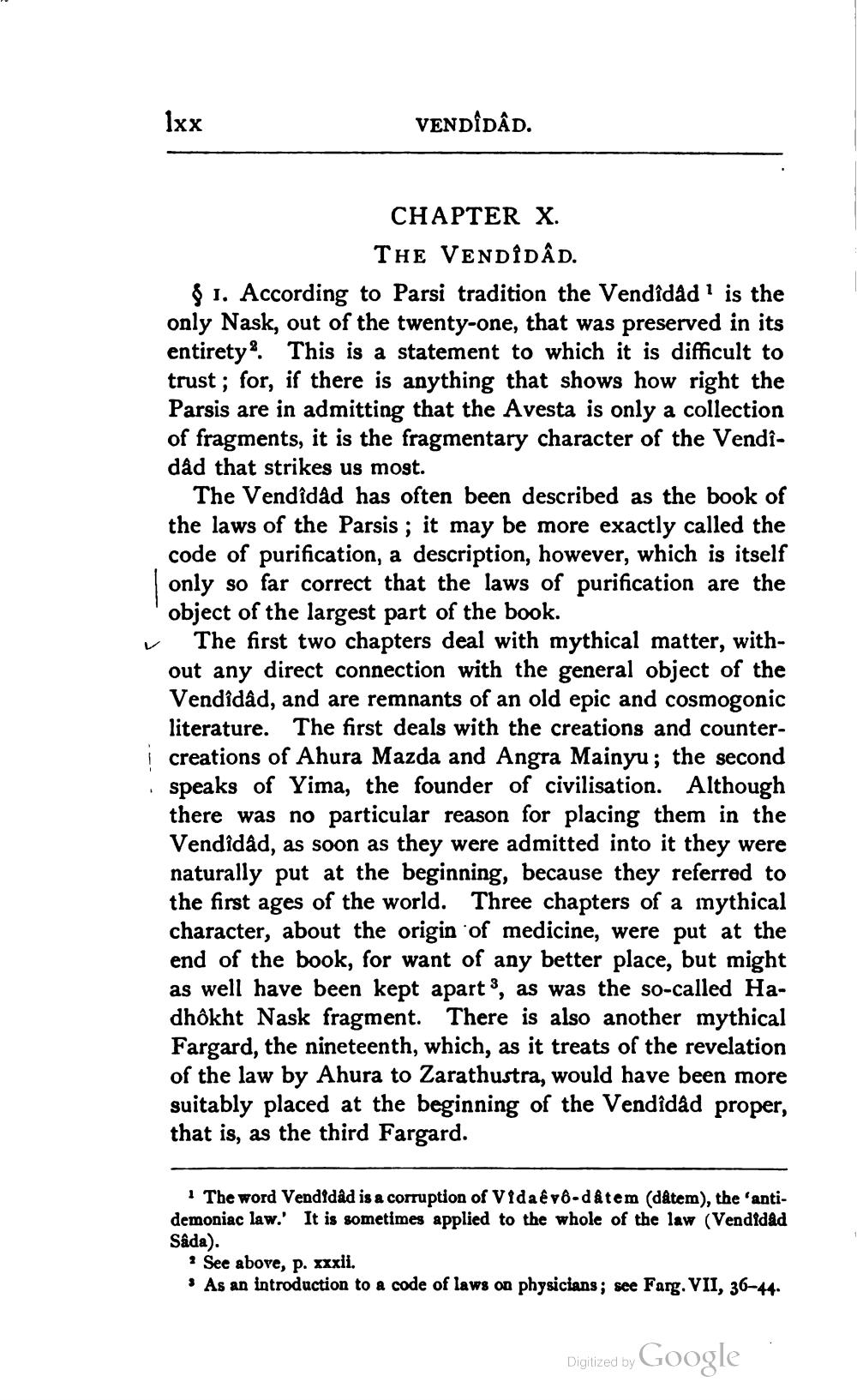________________
1xx
VENDÎDÂD.
CHAPTER X. THE VENDIDAD.
§ 1. According to Parsi tradition the Vendîdâd1 is the only Nask, out of the twenty-one, that was preserved in its entirety. This is a statement to which it is difficult to trust; for, if there is anything that shows how right the Parsis are in admitting that the Avesta is only a collection of fragments, it is the fragmentary character of the Vendîdâd that strikes us most.
The Vendîdâd has often been described as the book of the laws of the Parsis; it may be more exactly called the code of purification, a description, however, which is itself only so far correct that the laws of purification are the object of the largest part of the book.
The first two chapters deal with mythical matter, without any direct connection with the general object of the Vendîdâd, and are remnants of an old epic and cosmogonic literature. The first deals with the creations and countercreations of Ahura Mazda and Angra Mainyu; the second speaks of Yima, the founder of civilisation. Although there was no particular reason for placing them in the Vendidâd, as soon as they were admitted into it they were naturally put at the beginning, because they referred to the first ages of the world. Three chapters of a mythical character, about the origin of medicine, were put at the end of the book, for want of any better place, but might as well have been kept apart 3, as was the so-called Hadhôkht Nask fragment. There is also another mythical Fargard, the nineteenth, which, as it treats of the revelation of the law by Ahura to Zarathustra, would have been more suitably placed at the beginning of the Vendîdâd proper, that is, as the third Fargard.
1 The word Vendidâd is a corruption of Vidaêvô-dâtem (dâtem), the 'antidemoniac law.' It is sometimes applied to the whole of the law (Vendidâd Sâda).
2 See above, p. xxxii.
As an introduction to a code of laws on physicians; see Farg. VII, 36-44.
Digitized by
Google




